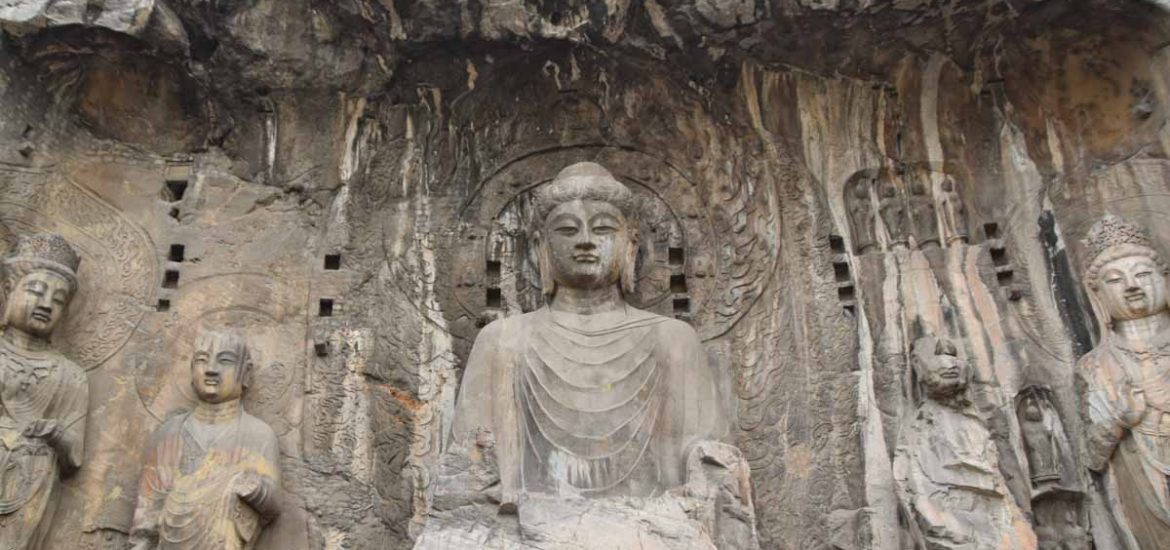If one seeks to understand better the general direction of Buddhist priorities in China, clues can be found in the National Cultural Heritage Administration’s (NCHA) blueprint of preserving China’s ancient grottoes in early December last year. During the 14th Five-Year Plan (2021–25), the NCHA released its own plan that would, by 2025, result in an exhaustive catalogue of grotto sites and a database of detailed information.
“In China, grotto temples are widely scattered and demonstrate the inclusiveness of Chinese people and the history of Sino-foreign cultural communication,” Li Qun, director of the NCHA, had said. “It’s significant to enhance protection of grotto temples and fully display their values to promote inheritance of fine Chinese culture and mutual learning among different civilizations.” (China Daily)
The terms “inclusiveness of Chinese people” and “Sino-foreign cultural communication” are noteworthy here. Before the Trump administration initiated in 2017 what would become a full-blown geopolitical competition between the US and China, the State Administration for Religious Affairs (SARA) had co-ordinated activities with the Buddhist Association of China (BCA), before SARA was dissolved in 2018 and such liaisons were assumed by the United Front Work Department. On both highlighted points, Buddhism – as a “philosophical membrane” permeating Chinese society – was seen as a vehicle for soft diplomacy that could interface with the governments of other countries and foreign interest groups.
This perception of Buddhism as an interface that was “both Chinese and cosmopolitan” must have informed the Chinese administration’s recent cooperation agreements with counterparts in Pakistan, Afghanistan, and Iran to improve cross-border exchanges on the conservation of grotto temples. (The Express Tribune) The 2021 plan released by the NCHA calls for shared exchanges, experiences in protecting heritage, and technology between China and countries with ties to the Silk Road. Woven into this notion was a proposal for joint training programs on grotto preservation between top Chinese institutions and counterparts in countries like Japan, the US, the UK, and Italy.
There were many other noteworthy provisions in the NCHA’s plan, including a renewed focus on small-to-medium sites that did not enjoy as much prestige or resource allocation as heavyweights like the Mogao Grottoes in Dunhuang. In September 2020, the first nationwide investigation on the status of grotto temple sites revealed that there were 5,986 sites, with only 288 registered as national-level key heritage sites and 417 under provincial-level conservation. (The Express Tribune)
Apart from the herculean task of sorting out this far-from-ideal ratio, the plan’s much greater ambition is linking conservation efforts with those of other countries. Until 2018, the government-approved World Buddhist Forums had explored various ways in which Buddhist institutions could contribute to the great project of national rejuvenation in China. The aims of the NCHA could be seen as an updated agenda that is, in phraseology and discourse, still in line with what the 2018 World Buddhist Forum in Fujian tried to achieve. Namely, the aims are: the positive roles of religious people in economic and social development, contributing to the Belt and Road Initiative, and building a community with a “shared future” for humanity. The latter phrase in particular has found its way into common discourse in Chinese government speeches and documents, and as a cosmopolitan interface, Buddhism and the Buddhist heritage are indelibly part of this shared future.
Now, the way forward seems clearer. Protecting the past has direct ramifications for the agenda of the present.
Furthermore, the idea of promoting the “inheritance of fine Chinese culture and mutual learning among different civilizations” (China Daily) reveals that Buddhist institutions will direct more of their attention outward, in tandem with conservators, archaeologists, scholars, and government bodies to link up with individuals and institutions beyond China to realize the cultural implications of the Belt and Road Initiative.
Notably, India does not seem to have been mentioned: neither as a country that has Buddhist grotto sites of interest, nor as one with experienced conservators who might be in a position to work with the Chinese. Since at least 2015, there has been a long and oft-emotionally charged back and forth between the two Asian giants on who is best positioned to be the vanguard of the Buddhist past and present alike. Narendra’s Modi’s treatment of international Buddhist diplomacy shaped Buddhism as a soft power vehicle for the Indian government until at least 2020, when Shinzo Abe stepped down as Japanese PM and prompted a soft rethink. Abe was a personal friend of Modi’s who, critically, supported an Indo-Japanese approach to Buddhist diplomacy with Asian nations like Thailand, Mongolia, and Vietnam. China, meanwhile, finds countries like Pakistan, Sri Lanka, and Nepal more hospitable to its vision of Buddhist conservation across the Silk Road, and momentum seems to be building once more for this approach.
Buddhist organizations, societies, and charities in China should play a core role in the revitalization of heritage sites not only in China, but across Eurasia, wherever China finds old friends and new allies. Where the Belt and Road Initiative goes, Buddhists should follow.
See more
Blueprint outlines preservation of grottoes (China Daily)
China seeks conservation of grotto temples in Pakistan (The Express Tribune)
Immersive digital exhibition launched in Shanghai to bring audiences into the Dunhuang culture (Global Times)
Related news from Buddhistdoor Global
Related features from Buddhistdoor Global
Buddhistdoor View: India’s COVID Crisis Could Be a Blow to its Buddhist Diplomacy

